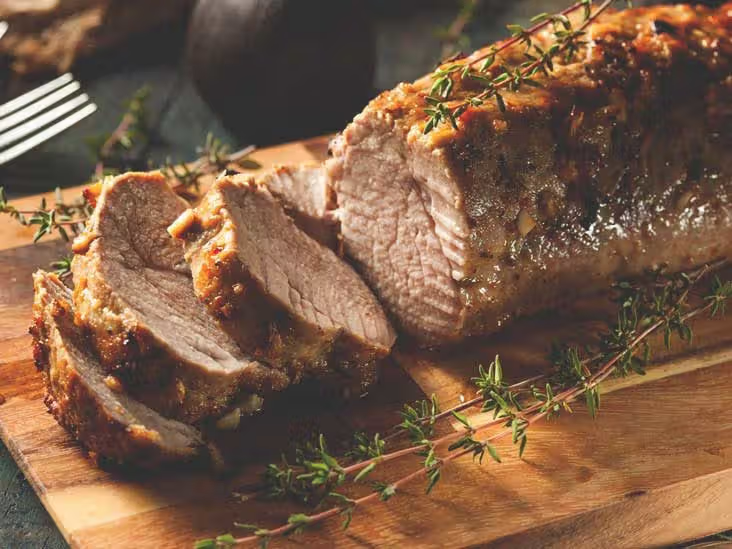Weight loss is a goal for many people looking to improve their health and feel their best. One strategy that has gained popularity in recent years is incorporating high-protein snacks into the diet. Among these options, dry meat has emerged as a convenient and portable choice. Packed with protein and low in carbohydrates, dry meat is often promoted as a tool to help control appetite and support fat loss. However, not all dry meat is created equal, and understanding its nutritional value and potential effects on the body is important before making it a regular part of a weight loss plan.
This blog explores the nutritional value of dry meat, its role in a weight-loss diet, and what to consider before making it a regular snack.
What is Dry Meat?

Dry meat is meat that has been preserved by removing most of its water content, either through air-drying, smoking, or curing with salt and spices. This process not only extends its shelf life but also gives it a concentrated flavor and chewy texture. Common examples include beef jerky, biltong, kilishi, and other regional varieties around the world. Because the water is reduced, dry meat becomes lighter, easier to store, and more nutrient-dense per serving, making it a popular snack for travelers, athletes, and health-conscious eaters.
Recommended: Foods to Avoid with Mast Cell Activation Syndrome (MCAS)
Dry Meat and Weight Loss: The Protein Advantage
One of the biggest reasons dry meat is linked to weight loss is its high protein content. Protein is essential for building and maintaining muscle, especially when you are in a calorie deficit. Unlike carbs and fats, protein takes longer to digest, which helps you feel fuller for longer and reduces the urge to snack on unhealthy foods.
Eating protein-rich snacks like dry meat can also boost metabolism through the thermic effect of food, meaning your body burns more calories digesting protein compared to other nutrients. This makes dry meat a convenient option for those looking to control hunger, support muscle growth, and burn fat more efficiently.
Is Dry Meat Good for Weight Loss?
Dry meat can be a helpful snack for weight loss when eaten in moderation. Its high protein content helps control hunger, maintain muscle, and boost calorie burn, all of which support fat loss. It is also portable and convenient, making it easy to stay on track with your diet while on the go.
However, not all dry meats are created equal. Many store-bought versions are high in sodium, sugar, and preservatives, which can lead to water retention or add extra calories. Eating large portions can also make it easy to go over your daily calorie needs.
Recommended: 10 Effective Weight Loss Strategies for a Healthier You.
In short, dry meat can be good for weight loss if you choose healthier, low-sodium options and watch your portion sizes.
Best Types of Dry Meat for Weight Loss
Not every dry meat option is equally healthy. If your goal is weight loss, it is important to choose varieties that are high in protein but low in added sugar, fat, and sodium. Some of the best options include:

- Lean Beef Jerky – Choose grass-fed or low-sodium versions without added sugar or artificial flavorings.
- Biltong – A South African dried meat that is usually air-dried and often contains fewer preservatives than commercial jerky.
- Turkey Jerky – Lower in fat than beef and still packed with protein, making it a lighter choice.
- Chicken Jerky – A lean, protein-rich alternative that can help cut calories while keeping you full.
- Homemade Dry Meat – Preparing your own allows you to control salt, spices, and added ingredients, ensuring a cleaner option for weight loss.
Recommended: How Does Weight Loss Affect Your Body. 18 Possible Ways.
When choosing dry meat, always read the nutrition label and aim for products with minimal ingredients and less than 300mg of sodium per serving.
Potential Downsides of Eating Dry Meat Regularly
- Dry meat often contains a high amount of sodium, which can lead to bloating, water retention, and higher blood pressure if consumed too frequently.
- Some packaged varieties are made with added sugars, flavor enhancers, and preservatives, which increase calorie intake and lower the overall nutritional value.
- Because dry meat is calorie-dense and easy to snack on, many people tend to overeat it without realizing how quickly the calories add up.
- For certain individuals, the concentrated protein, spices, and curing agents may cause digestive issues such as stomach cramps, gas, or discomfort.
- High-quality dry meat is often more expensive than fresh protein sources like chicken, fish, or eggs, making it less cost-effective for daily consumption.
- Regularly replacing fresh, whole foods with dry meat may reduce dietary variety, which is important for balanced nutrition and long-term health.
How to Include Dry Meat in a Weight Loss Diet
Dry meat can be a helpful addition to a weight-loss plan, but it works best when included thoughtfully. Here are some practical ways to enjoy it without overdoing calories or sodium:
1. Use Dry Meat as a High-Protein Snack
Eating dry meat between meals can help control hunger and prevent unhealthy snacking. Its protein content keeps you feeling full longer, reducing the temptation to reach for sugary or processed foods.
Recommended: Is Barre Blend Good for Weight Loss?
2. Pair with Fiber-Rich Foods
Combine dry meat with vegetables, whole-grain crackers, or a small salad. Fiber slows digestion, adds volume to your meal, and helps you feel satisfied while keeping calories in check.
3. Control Portion Sizes

Stick to one serving of around 25–30 grams at a time. Dry meat is calorie-dense, so keeping portions moderate ensures you enjoy its benefits without exceeding your daily calorie goal.
4. Choose Low-Sodium and Low-Sugar Options
Opt for dry meat with minimal salt and sugar, or make your own at home. This reduces the risk of bloating, water retention, and unnecessary calorie intake from additives.
Recommended: What is the Best Alcohol for Weight Loss
5. Include as a Post-Workout Snack
After exercise, pair dry meat with a small portion of fruit or nuts. This combination helps with muscle recovery while providing protein without excess fat or sugar.
6. Rotate with Other Protein Sources
Avoid relying on dry meat every day. Mix it with fresh protein sources like chicken, fish, eggs, or legumes to maintain dietary variety and ensure a balanced intake of nutrients.
Conclusion
Dry meat can be a convenient and protein-rich snack that supports weight loss when eaten in moderation. Its high protein content helps control hunger, maintain muscle, and boost metabolism, but it is important to choose low-sodium, low-sugar options and watch portion sizes. Including dry meat as part of a balanced diet alongside fresh protein sources, vegetables, and whole grains can make it a helpful tool for achieving your weight-loss goals without compromising overall health.
